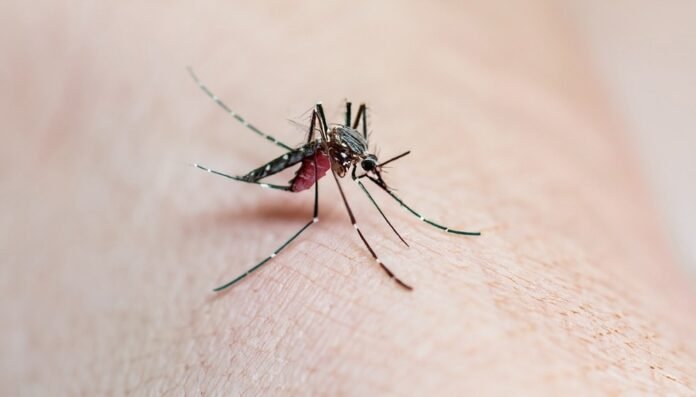Modeling study offers the first global assessment of chikungunya’s health and economic burden, revealing previously underestimated impacts on health systems worldwide
In a recent article published in BMJ Global Health, researchers assessed the global burden of chikungunya between 2011 and 2020, including economic and health costs.
They concluded that the burden of this disease is higher than previously thought and could strain local health systems.
Background
Chikungunya is a mosquito-borne viral disease caused by the chikungunya virus (CHIKV) spread by Aedes mosquitoes. The first reported outbreak was in Tanzania in 1952, and it is now a global health concern. In 2022, CHIKV was found in over 110 countries.
Acute symptoms of chikungunya include fatigue, rash, joint pain, and fever, while chronic effects extend to long-lasting joint pain and other complications that can severely impact the quality of life of individuals affected. Severe cases may affect multiple organs and cause serious health issues or mortality.
The disease has serious economic impacts, with disruption of local economics, responses to outbreaks, and hospitalizations contributing to the high economic burden. Aedes mosquitoes are spreading due to environmental changes, urbanization, and globalization, which increases the risk of outbreaks around the world.
Current knowledge gaps include the underreporting of chikungunya due to misdiagnosis, limited diagnostic tools, and issues related to healthcare access. The actual global burden of chikungunya remains unclear and is often underestimated.
About the study
Researchers aimed to fill current knowledge gaps by modeling the global economic and health burden of chikungunya to guide public health policies, improve surveillance, and allocate resources effectively.
They built simulation models driven by data that estimated the global burden of the disease from 2011 to 2020, following the Global Burden of Disease (GBD) guidelines. The key outcomes included economic burden (societal and healthcare costs), disability-adjusted life years (DALYs), and global case numbers.
Researchers grouped data into seven GBD super-regions for comparison after collecting case data from multiple sources, including local health ministries. They corrected cases for underreporting, using estimates from a seroepidemiological study conducted in Puerto Rico and adjusted models based on regional surveillance systems and the global health security index.
DALYs included years lived with disability (YLDs) and years of life lost (YLLs). Since mortality primarily occurs in the acute phase of the disease, this was the phase used to calculate YLLs. Researchers estimated YLDs using disability weights (DWs) comparable to other diseases like moderate dengue for acute cases and rheumatoid arthritis for chronic ones. A mortality rate of 0.07% was used, with the average age of death set at 51 years.
For cost calculations, direct costs included the medical resources used during chronic and acute phases, particularly medication, outpatient care, and hospital stays. Indirect costs included the absenteeism of caregivers as well as patients. Costs were adjusted by inflation rates and purchasing power parity (PPP). Proxy methods were used to estimate costs, especially in countries lacking detailed data.
Findings
From 2011 to 2020, 18.7 chikungunya cases were reported across 110 countries and regions, of whom 7.9 million people progressed to the chronic stage. Researchers estimated that 13,000 people died, but mortality could range from a low of 2,242 to a high of 336,286.
The highest number of cases were recorded in the Caribbean and Latin America, with Brazil accounting for 3.2 million cases, the Dominican Republic contributing 2.7 million, and 1.6 million cases recorded in French Polynesia. Central Asia and Eastern and Central Europe recorded the lowest number of cases (202), possibly from returning travelers. Cases peaked in 2014 (8.7 million cases).
Calculations for the global health burden suggested that 1.95 million DALYs were lost from 2011 to 2020, of which 76% were from chronic disease and the remaining were from acute disease. YLD accounted for 77% of DALYs. The Caribbean and Latin America accounted for 80% of DALYs, while Oceania, East Asia, and Southeast Asia contributed 12%. 17% of the global burden of DALYs was faced by Brazil, 14% by the Dominican Republic, and 9% by French Polynesia.
The global economic cost of chikungunya for this period was approximately $49.9 billion, of which $25.1 billion was attributed to chronic cases. Indirect costs accounted for the majority (94.3%) of this amount, primarily due to absenteeism. Brazil carried the largest burden of $9.8 billion. The average cost per case was $2,700.
Conclusions
These findings indicate that the economic and health burden of chikungunya is likely underrecognized, though certain costs, such as vector control, were not included. Understanding the disease’s impact is crucial for global health security, public health interventions, and resource allocation. This study provides valuable insights for decision-makers and future research into chikungunya’s global burden.
Journal reference:
- The global health and economic burden of chikungunya from 2011 to 2020: a model-driven analysis on the impact of an emerging vector-borne disease. de Roo, A.M., Vondeling, G.T., Boer, M., Murray, K., Postma, M.J. BMJ Global Health (2024). doi:10.1136/bmjgh-2024-016648
https://doi.org/10.1136/bmjgh-2024-016648


